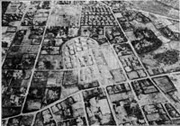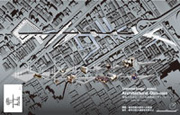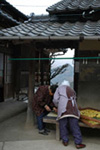A few years ago, I changed my specialty from Architectural History to Temporal Science for Architectural Representation (TSAR). This made my course clear. Since it is an academic discipline I have created by myself, the degree of recognition is very low or even none. Despite this, I am confident that it will become an important field in the future. I will explain what TSAR is and share some accomplishments below.
Architectural History, or architectural beings of the past, was my previous subject. But one day when I was taking a walk, I noticed that a notable thesis has not been developed. I saw a tomb mound. This was when I lived in a district in Osaka, where 40 or more tomb mounds of various sizes were located. Planned roads were derailed to stay away from these tombs. In fact, things from the past, regardless of their size, have great impacts on the present without being noticed carefully. Though they were produced in the past, perhaps we must deal with these things as present beings. The past isnft a "has been," but rather an "is." The present is a projection of the past. Since this experience, the city surrounding me has been transformed into an indefinable collection of things. From this experience I realized the need for an academic discipline to study the accordance of past things and the present, which I named TSAR. It contains the word "Science" because when we look upon things from the past as mentioned before, existing historicism and genealogy serves merely an accessory function. Thus we need the universal aspects of science. Moreover, since studying the accordance of the two is required, this is also a theory for representation. From this perspective I have introduced some theories of practice and expression. I have just started this academic region, so I kindly ask for your support. |
Laboratory URL http://www.nakatani-seminar.org/
Nakatani Norihito, Doctor of Engineering. 1989 Completed Masterfs Degree at Waseda University. 1989 - 1992
Department of Design, Shimizu Corporation. 1995
Completed Doctoral Degree at Waseda University. 1999 - 2006
Assistant professor, Osaka City University. 2007 - 2011
Associate professor, Waseda University. 2012 -
Professor, Waseda University. Major publications "SEVERALNESS+ City, Architecture and Human Beings as the Cycle of Things," Kajima Institute Publishing, 2011. |


